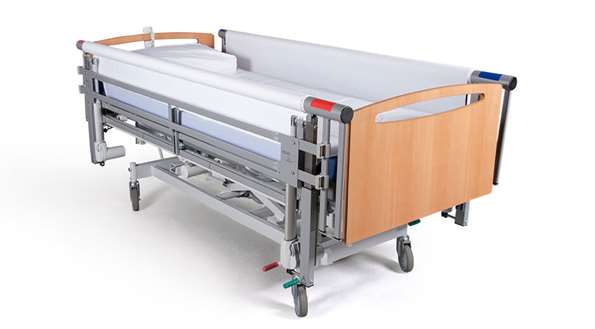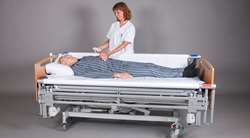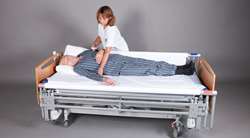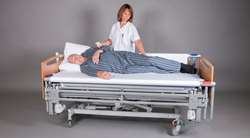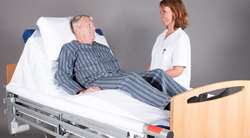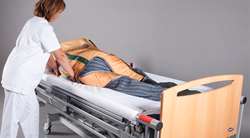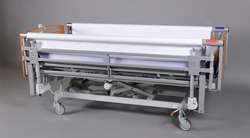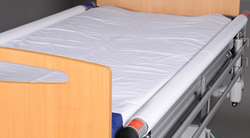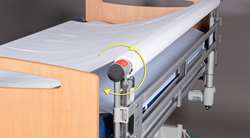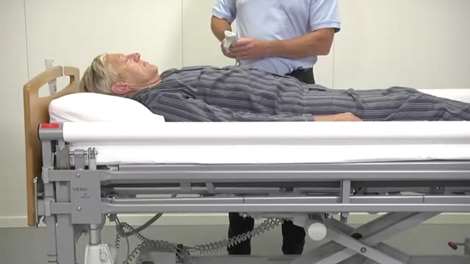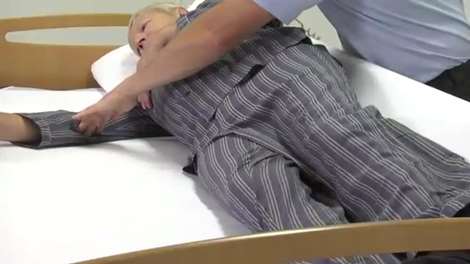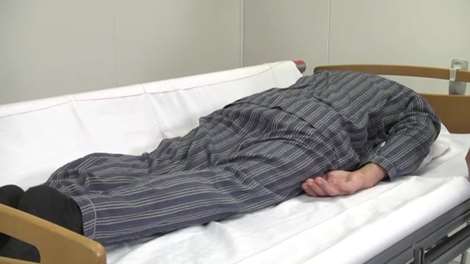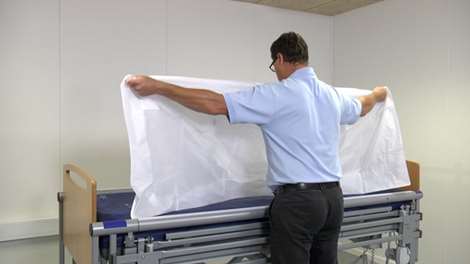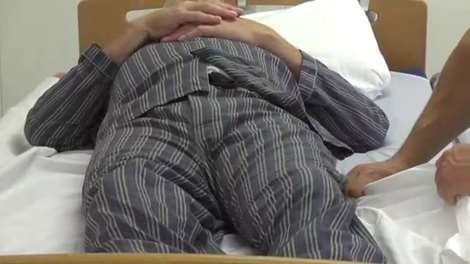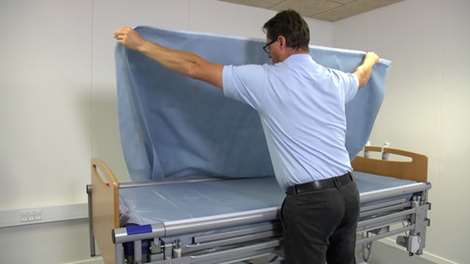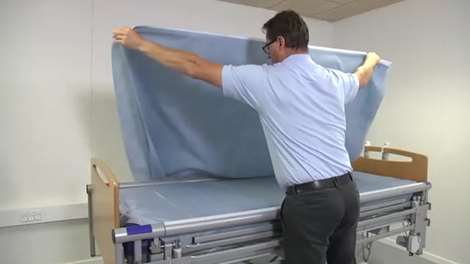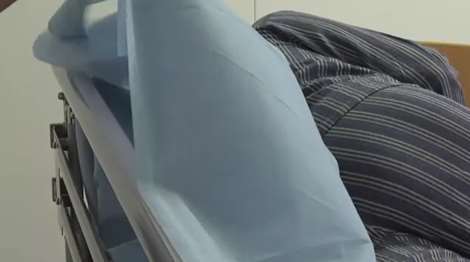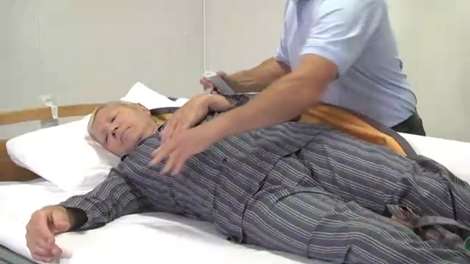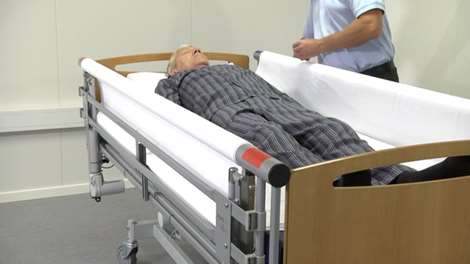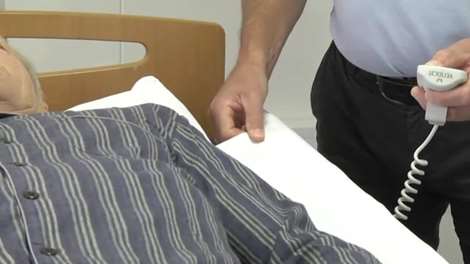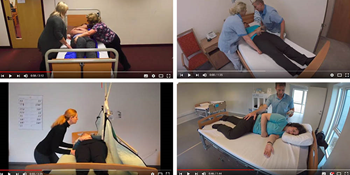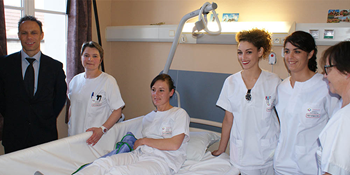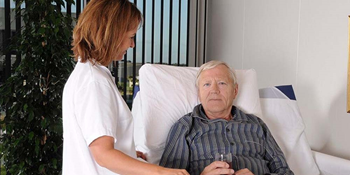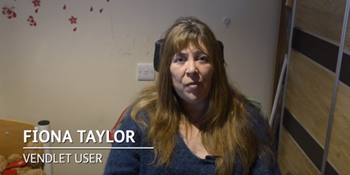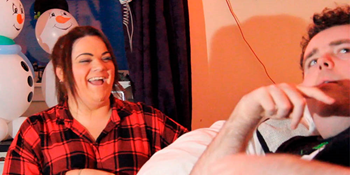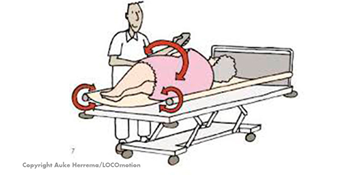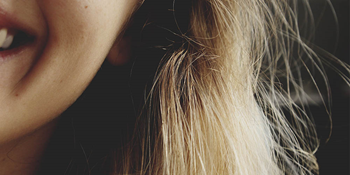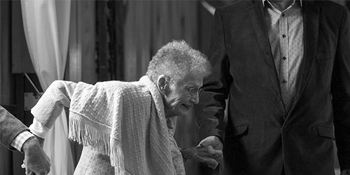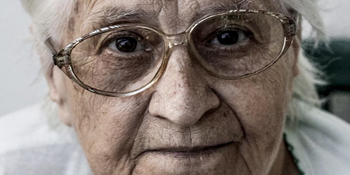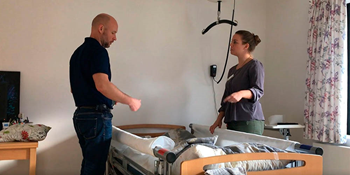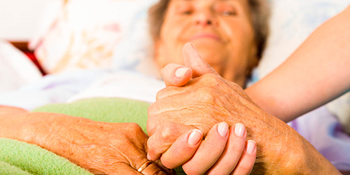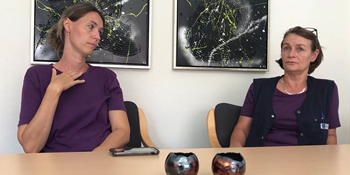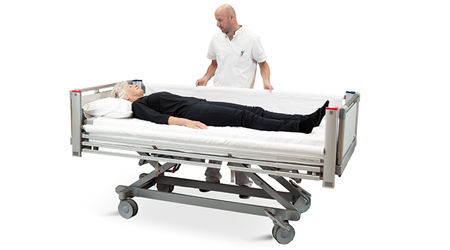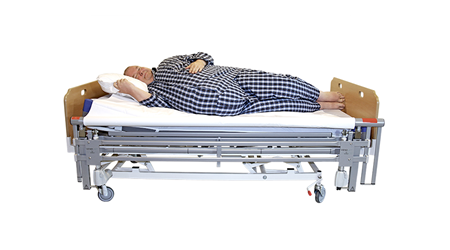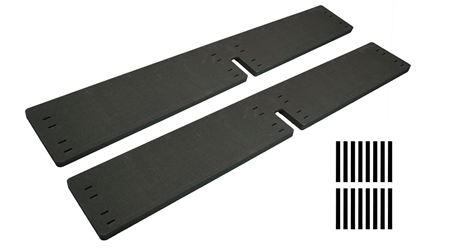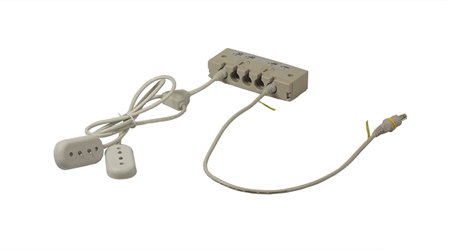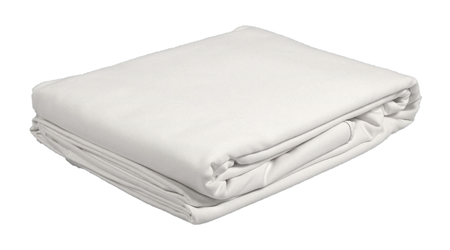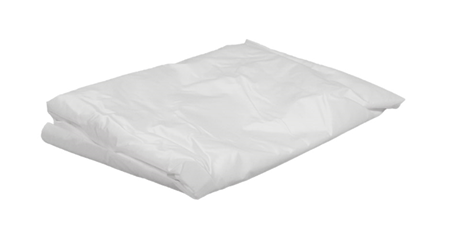This powered turning system is a fully automatic transfer aid that is used to turn and reposition clients in bed.
The transfer aid improves workplace health and safety, provides gentle and calm care for the client, reduces the risk of pressure ulcers, saves time and resources and much more.
With the turning system, it is possible to:
- Turn a person from supine to lateral position and back
- Transfer a client sideways in bed
- Transfer a client from sitting on the bedside and further into the bed
- Move the client up in bed
- Simplify the process of applying a sling
- Turn a patient to/from the prone position
Safe Patient Handling
This assistive device can be used for a range of patients and clients. For people with no or very limited mobility, e.g. people with paralysis, Cerebral Palsy or severe Parkinson’s Disease, the system is a safe way of moving and handling, that is gentle on the client’s skin reducing the risk of tissue damage and providing an overall more comfortable experience. The large sheet ‘hugs’ the client while they are being turned, making the transfer feel controlled and safe.
The system is also beneficial for people with cognitive dysfunction, such as people with dementia. The gentle movements of the turning system help calm the client and are recognizable no matter who is operating the system. This makes it easier for cognitively impaired patients to understand what is going on and reduces confusion. These clients also often benefit from systems with speed adjustment (VENDLET V5S Speed Adjust).
Independent Living
For clients with some mobility, the turning system can be used in combination with other mobility aids such as bed ladders, to improve the health and safety of healthcare staff. The system can also be used by the client, typically in cases where the client retains function in some limbs and is cognitively capable of understanding how to use the system. Among other things, the client can use the system to reposition themselves during the night.
Potential users:
- People affected by pain, people receiving palliative care
- People at risk of developing pressure ulcers
- People with disabilities or chronic diseases such as Cerebral Palsy, Parkinson’s Disease, paralysis, muscular dystrophy, and more
- People with cognitive dysfunction such as people with Alzheimer’s disease
- Elderly or geriatric patients who cannot turn themselves in bed
Improved Work Health and Safety
Turning and positioning clients in bed can be a strenuous task for healthcare staff and is the cause of many workplace injuries. Using a powered patient turning system reduces risk to the healthcare personnel, increases the quality of care and saves time and resources used on moving and handling patients.
Turning a patient is often a two-person job, but with this transfer aid, one person can do the job on their own without compromising the quality of care.
How it Works
This assistive device consists of two motorized bars mounted on each side of the bed and is operated by hand control. To turn a client from supine to side-lying position, simply raise one bar and tighten the sheet. As the system turns the client, gently position their arms and legs as needed.
With the Speed Adjustment add on, it is possible to adjust the speed of the system to 75% and 50% or regular speed.
Benefits:
- Improved work health and safety, fewer sick days, and injuries
- Fewer pressure ulcers, less friction, and shearing
- Gentle and calm care makes the client feel safe
- Speed Adjustment for an even calmer and slower transfer
- Build-in bed rail approved by independent test institute
- Change the sheets with the client still in bed
Build-in Side Rail
When the bars are left up, the VENDLET patient turning aid functions as a build-in bed rail, which has been tested and approved by an independent test institute (TÜV).
Whether to leave the bed rail up or down is up to a clinical evaluation of the client’s needs.
Areas of Use and Mounting
This assistive device can be mounted on most care beds in hospitals, care homes or nursing homes, and in the client’s own home. It would be advantageous to use the patient turning aid with slide sheets, positioning cushions and pressure-relieving mattresses.

